How To Choose The Best Dog Food
[easy-social-share]
Determining the best dog food to feed your beloved dog is a challenge for many of us.
While our focus is on the health of man’s best friend, in many situations we are being fooled by the marketing genius of expert advertising and public relations.
Choosing what to feed our dogs has nearly developed into a job itself.
We need to sift through the quagmire of material that dog food companies present us, determining what is actually factual and evidence-based, from the marketing rubbish.
This article highlights some of the challenges we as vets see on a daily basis when trying to discuss and help people feed their dogs.
Is Feeding Your Dog A Wolf Diet A Good Idea?
The hierarchy of breed diversification in dogs is fascinating and yet some people still fantasize that all dogs are essentially and preferentially wild carnivorous hunters like their wolf ancestors.
If dogs were like their wolf ancestors, we would not be able to live in domestic harmony. Their prey drive would soon see an end to cats and pocket pets in the home.
All domestic dogs have evolved as one subspecies – Canis lupus familiaris from the wolf Canis lupus.
Thousands of years of selective breeding has seen the emergence of over 350 recognised modern breeds and an infinite variety of cross breeds with specific traits.
To suggest that all dogs need a one and only traditional meat diet, as is often suggested in the media and many pet food companies, is illogical and is not based on knowledge of the canine species.
To suggest that all dogs need a one and only traditional meat diet, as is often suggested in the media and many pet food companies, is illogical and is not based on knowledge of the canine species.
The transition from wolf to dog required behavioural adaptions which included following a similar diet to humans.
Domestic dogs are essentially opportunistic scavengers content to provide companionship and protection to humans for easy access to a secure food source and shelter.
Dogs and humans share 84% of their DNA.
The dietary needs of dogs require them to consume protein, fats, and most interestingly, carbohydrates for optimal growth and development.
“Adaptations allowing dogs to thrive on a diet rich in starch, including a significant AMY2B copy number gain, constituted a crucial step in the evolution of the dog from the wolf. It is however not clear whether this change was associated with the initial domestication, or represents a secondary shift related to the subsequent development of agriculture.
“Here we use droplet PCR to investigate worldwide AMY2B copy number diversity among indigenous as well as breed dogs and wolves to elucidate how a change in dog diet was associated with the domestication process and subsequent shifts in human subsistence. We find that AMY2B copy numbers are bimodally distributed with high copy numbers (median 2nAMY2B=11) in a majority of dogs but no, or few, duplications (median 2nAMY2B=3) in a small group of dogs originating mostly in Australia and the Arctic.
“It was no surprise to see differences in brain genetics, Axelsson said, given that dogs had to modify their behavior to fit into human society. What did surprise the researchers, however, were 10 regions held genes involved with diet, specifically the breakdown of starches. Humans are well-equipped for starchy diets: Human saliva contains an enzyme called amylase, which starts breaking down starches as soon as food hits the mouth. Dog drool doesn’t have this advantage, but dogs do excrete amylase from their pancreases, allowing for the digestion of starches in the gut.
“The researchers found that dogs have more copies of a gene called AMY2B, crucial for amylase production, than wolves. And in dogs, this gene is 28 times more active in the pancreas than in wolves.
Dogs also showed changes in specific genes that allow for the breakdown of maltose into glucose, another key starch digestion step, and in genes allowing for the body to make use of this glucose.
We know that not all dogs evolved and adapted to the same diets, just as culturally human diets are very geographically specific.
Raw Food Diet For Dogs
There is also a problem with feeding modern dogs a raw-only diet.
In the wild state, a dog would survive by eating the vegetable-based gut contents (poo), organs, bone, and muscle meat of its live kill.
It would also choose its own diet.
For dogs living at home with us, feeding a raw diet straight from the butchers can become problematic as a dog may suffer from poor nutrition, not to mention the many diseases and parasites found in raw food that can cause disease in humans.
“Just as many people are trying to eat less processed food to improve their health, some dog owners are turning away from conventional pet food. Instead they’re trying to get back to what they see as a more traditional “butcher’s dog” diet of raw meat, albeit with pre-prepared products that can be served easily and frozen for convenience.
A recent study has raised concerns about the health risks of these.
A raw meat-based diet fed to dogs & cats can be a possible source of bacterial and parasitic diseases for humans and these pets.
But just how big a problem is this, and who is really at risk?
First it’s worth pointing out that the evidence for the health advantages of raw meat-based diets is limited.
Some research suggests they may enhance an animal’s overall digestion (and so the size of their poos). But robust comparative studies are rare and there are still concerns about whether some of these diets provide enough nutritional value.
“Traditional” dog diets would have included raw meat but also table scraps and other homemade foods. And unlike most human processed foods, manufactured pet food is often tailored to provide a key range of nutrients. After all, the move to commercial pet food coincided with increased research into the nutritional requirements of the dog.”
In a recent study published by the Veterinary Record, Dutch researchers set out to find the presence of zoonotic bacterial and parasitic pathogens in raw meat-based diets (RMBDs).
The research group analysed 35 commercial frozen raw meat products from eight different brands.
It found E. coli in 80% (28) of products, Listeria monocytogenes in 54% (19) of them and Salmonella species in 20% (7).
Parasites were also present.
22% (8) contained sarcocyst species and two products (6%) contained Toxoplasma gondii.
Similar research results highlighting contamination of raw food have been seen in other studies in New Zealand, Canada and North America.
By comparison, it is important to note that feeding human-grade raw meat from the butcher is less likely to be an issue than these commercial pet food products in these studies, although this doesn’t negate the risk of food-borne disease totally.
There have been no studies comparing commercially produced raw dog food with small batches of raw butcher’s meat, therefore the risks are essentially unknown.
Is It Dangerous To Feed My Dog Or Cat A Raw Diet?
When considering the best dog food to feed your mate we need to consider the pluses and the concerns.
The main concerns we have with feeding a raw diet are:
1. Exposing your pet to bacteria and parasites
2. Dogs or cats becoming carriers for a disease that humans can then catch
3. Nutritional deficiencies in the diet resulting in suboptimal health
4. Potential for whole bones to choke your pet, break their teeth or cause an internal blockage
Can My Dog Be Infected By Bacteria And/Or Parasites By Eating Raw Food
In short, the answer is yes.
For the vast majority of dogs and cats being exposed to bacteria and parasites doesn’t cause major health issues.
They may suffer a gastrointestinal upset such as vomiting and diarrhoea for a few days, but most don’t become extremely ill.
Get in touch with our Your Vet Online Vets for an online consult if your pet gets vomiting and diarrhoea.
There have been cases where raw chicken necks have been implicated with neurological disease-causing paralysis in dogs.
Of course, cases of enteropathogenic bacteria in dogs and cats can lead to hospitalisation when an illness is severe.
Does Feeding My Dog A Raw Diet Put My Family and Friends At Risk?
Yes.
Both dogs and cats can become carriers of these bacteria and spread them through their faeces, which can lead to serious illness in humans.
This means that even if you don’t notice illness in your pet, your pet can, in fact, pass on the bacteria or parasites that they ingested with the food and pass this onto people.
People can be exposed to these bugs in a range of ways such as direct contact via touching, petting, exposure to saliva and faeces and even sharing sleeping spaces.
Bacteria and parasites can also be passed on indirectly through contact with faeces contaminated surfaces such as floors and toys.
Feeding a pet a raw diet can expose all humans in the home and those that come into contact with your pet, to harmful bacteria and parasites.
The most vulnerable to this exposure are pregnant women, the very young, the very old, and those that are immunocompromised.
This is when sharing a kiss with your pet is probably not exactly the best advice!
Feeding a pet a raw diet can expose all humans in the home and those that have contact with your pet to zoonotic parasites and bacteria
Are Raw Diets Nutritionally Complete?
Some raw diets may be nutritionally complete, however, the majority are not.
All homemade raw diets require the addition of vitamin and mineral supplements.
When purchasing a commercially formulated raw diet, ensure that the label says that the food is complete and balanced for the species and life stage of the pet you are feeding it to.
The homemade 80/10/10 diet formulation is not founded on any science and is unbalanced.
It is important to have a homemade diet balanced by a veterinary or PhD qualified animal nutritionist.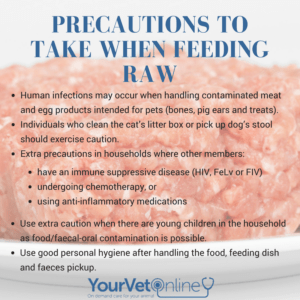
The best source of nutritional advice for domestic pets is always your veterinarian.
Some dogs need specific diets to address specific health issues such as kidney disease, liver disease, or heart disease.
Some diets are required to prevent urinary health issues.
Not all foods are created equal or healthy for every animal whether they are a commercially produced raw diet or kibble.
As with humans, a balanced, nutritionally diverse, energy-appropriate diet adequate exercise, and regular preventative health care are the best ways to ensure a healthy life for your pet.
A paper looking at the nutritional balance of raw food diets found that 60 percent of recipes used in homemade raw diets had nutritional imbalances.
There are certain stages of life where an unbalanced diet can cause real harm, such as gestation, lactation and puppy growth.
During these periods it is essential to limit exposure to potential bacteria and parasites AND to feed a balanced diet.
Feeding a life stage-appropriate diet applies to whatever type of food you choose to feed your pet.
For pet owners who want to avoid commercial food, we advise a cooked homemade diet designed by a veterinary nutritionist.
If you wish to have a diet produced by a qualified veterinary nutritionist send an email to our team.
Is Feeding Raw Bones Good For My Dog?
Feeding raw meaty bones is a large part of the raw food diet movement, however, knowing how to feed bones safely is required.
You can find out how to do this by reading How To Feed Bones To Dogs: How To Do It Safely
Does My Dog Need Grain Free Dog Food?
In most cases: NO.
Grains are a very uncommon cause of food allergies.
When a pet has a food allergy, the most common cause is an allergy to one of the animal proteins in the food.
Again this is an attempt at buzz by marketers.
Grain-free does not automatically mean hypoallergenic.
What’s more, it can mean different things to different manufacturers. It can be incredibly confusing.
Oh and please don’t go down the rabbit hole of gluten-free – gluten allergies seem to be extremely rare in pets, having been clearly documented only in Irish Setter dogs, possibly in Border Terrier dogs, and never in cats.
Even though dogs are a carnivore species, they eat as omnivores and require carbohydrates for normal stool production.
If your dog or cat suffers from allergies you can discuss with our online vets how you can manage this and we can put a detailed program in place when you choose to have a personal consultation with us.
What Are Anti-Inflammatory Pet Foods?
Another myth from our marketing friends, although this one can be a lot harder for us all to analyse and understand.
While it is true that some sources of fats are more inflammatory than others i.e. Omega 6 vs Omega 3, it’s not as simple substituting one for another.
Remember that an essential nutrient is one that an animal can’t make on its own and must get from food.
The fatty acid linoleic acid (an omega-6 fatty acid), alpha-linolenic acid (ALA) and/or eicosapentaenoic acid (EPA) and docosahexaenoic acid (DHA), all of which are omega-3 fatty acids are essential fats for ALL animals.
Most human and pet diets are high in omega-6 but low in omega-3 and you’ve probably heard people saying that this results in increased inflammation (although the clinical importance of this in pets still is unclear).
The reason people think that high levels of Omega-6s result in inflammation is because Omega 6 is a building block in compounds that promote inflammation.
Conversely, Omega-3s are more likely to be associated with compounds that help resolve inflammation.
Like most things in life, too much or not enough can have adverse effects. Therefore eliminating omega 6 can have devastating consequences.
When formulating a diet it is important to understand why you are using a particular ingredient.
For example, many people love to use coconut oil to replace corn oil in a diet. However, if the diet is deficient in linoleic acid the amount of coconut oil you would need to make the diet balanced would make the food unsavory.
Bottom line, there is more to diet formulation than just the ingredients. This brings us to:
Don’t Be Fooled By By-Products
Pet Food marketers and those against kibble will love to tell you that by-products are nasty, unhealthy and not fit for consumption.
Nothing could be further from the truth.
By-products (mainly organ meats and entrails) often provide more nutrients than muscle meats on a per-weight basis and form a major part of a staple diet for many people – yes people – in many countries worldwide.
Feeding these foods to pets is not only safe and healthy, but it is better for the environment and dramatically reduces food waste. Yay, a win-win for the planet!
The term “by-products” has a strict legal definition and specifically excludes hair, hooves, horn, hide trimmings, manure and intestinal contents, as well as anything that is not specifically part of the carcass (e.g., floor sweepings, trash).
Often these byproducts are rendered to separate the fat and protein out, thus making it easier to use as an ingredient.
Of course, not all by-products and meal are created equal, therefore it is important to look at who is manufacturing the pet food and the quality control measures in place.
Best Advice For Feeding Your Pet The Best Food
Stop being fooled by marketing hype and ingredient lists on food labels, follow these instructions to ensure you are feeding your pets adequately for their needs:
1. Discuss your pet’s diet with a veterinarian or qualified (degree) nutritionist. They will help select food that meets your pet’s nutritional needs during different life stages, activity level, body condition and if there are any medical conditions.
2. Find the nutritional adequacy statement.
3. Below are some questions savvy owners should ask companies to select the best possible food for their pets (modified from the Tufts Veterinary Nutrition Team, World Small Animal Veterinary Association’s Nutrition Guidelines ,and Freeman et al. J Am Vet Med Assoc 2013).
- Does the manufacturer employ at least one full-time qualified nutritionist? This means a PhD in animal nutrition or board-certification (and, ideally, both) by the American College of Veterinary Nutrition or the European College of Veterinary Comparative Nutrition.
- What are the qualifications of the person who formulates their food (if it’s not the same person as their nutritionist)? This expert should have the same qualifications as in #1.
- Does the manufacturer own the food manufacturing plant where the food is made? Most small companies do not own their own manufacturing plants so they have little control over quality of production.
- Many companies will say they produce pet food of the highest quality, but what does this really mean? They will say the food is complete and balanced, but again, how do they determine this? You need to ask what quality control measures the manufacturer has in place? Many studies have shown nutritional deficiencies in pet foods that claim on the label to be nutritionally complete and balanced, many also contain ingredients not stated on the label – a disaster for those pets with allergies.
- Quality control measures the manufacturers should be using include
- certification of a manufacturer’s procedures e.g., Global Food Safety Initiative, Hazard Analysis and Critical Control Points, or your local country Pet Food Feeding Industry Association
- testing ingredients and end products for nutrient content, pathogens, and aflatoxins
- materials risk assessments
- supplier audits
- Are the pet foods tested with Association of American Feed Control Officials (AAFCO) feeding trials? (this information is found on the label). If AAFCO feeding trials are not conducted, the manufacturer should at least ensure their diets meet AAFCO nutrient profiles through analysis of the finished product (rather than by predicting they meet the profiles based only on the recipe). This information can only be determined by asking the manufacturer.
- Does the company conduct any research? Do they publish it in peer-reviewed journals?
- Will the manufacturer provide you with the amount of any nutrient of interest (for example, sulphur, sodium, protein, copper, or calcium). The manufacturer needs to provide you with this information not just as guaranteed analysis numbers (which will be only minimums or maximums, and are nearly useless), but as the average (or typical) analysis. Ideally, the values need to be provided on an energy basis (i.e., grams per 100 kilocalories or grams per 1,000 kilocalories), rather than on an as-fed or dry-matter percent basis, which does not account for the variation in energy density among foods.
- Can the manufacturer provide you with the number of calories for any of their foods on any requested weight or volume basis (for example, per cup, or per kilogram)?
- How professional is the manufacturer? Do they criticise and bash other pet food companies especially relying on information that is based on myths, rather than factual information in their advertisements or on their websites?
Unfortunately, the pet food industry is not well regulated and many manufacturers love to confuse well-meaning pet owners. If any of these questions cannot be answered in an appropriate fashion consider this a red flag and move on. Your Vet Online is happy to provide nutritional advice or refer you to someone who can.
[easy-social-share]
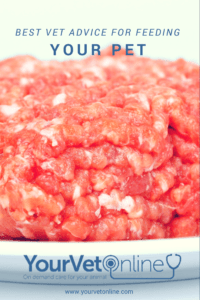

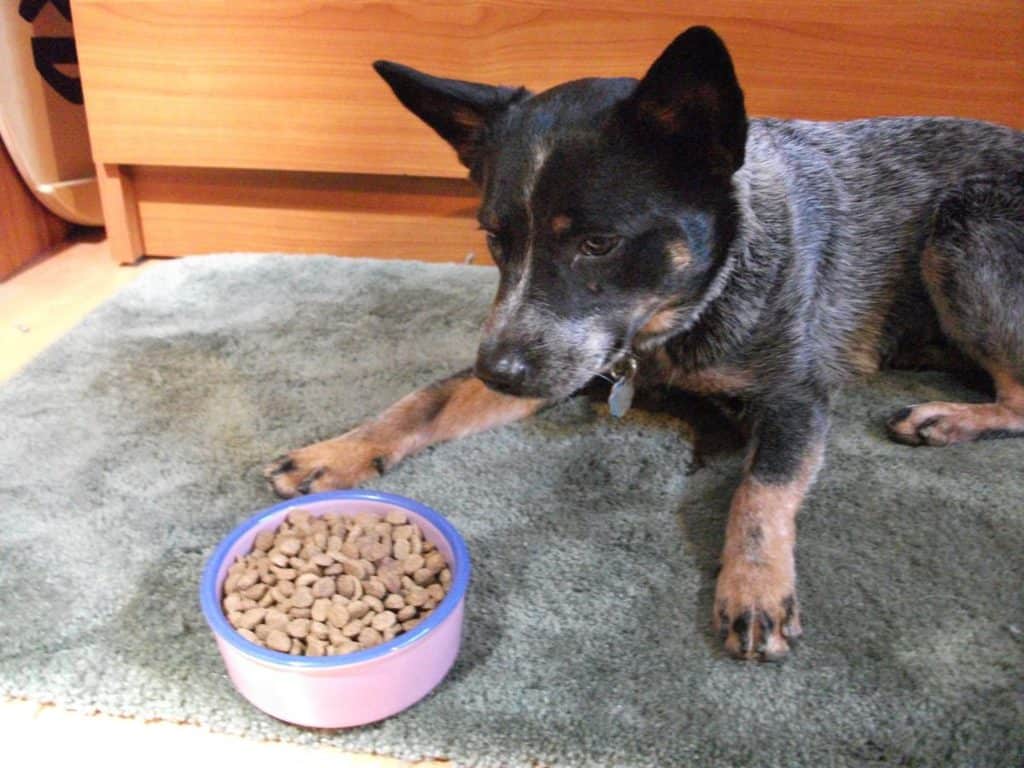
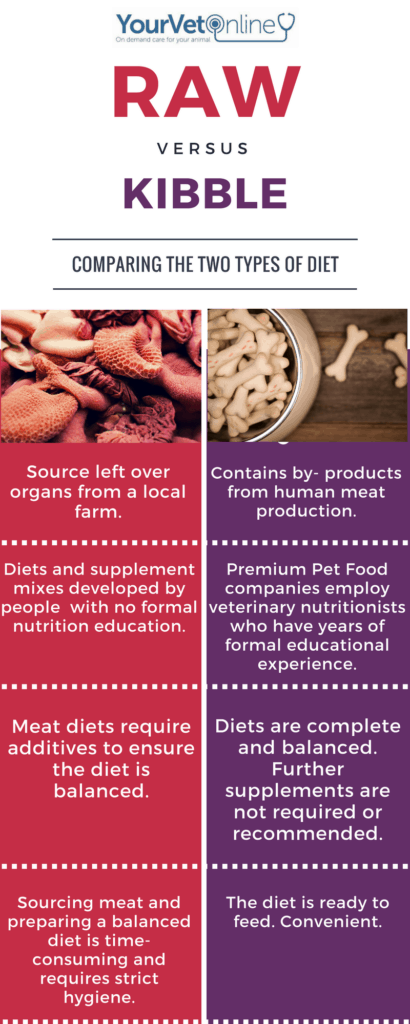
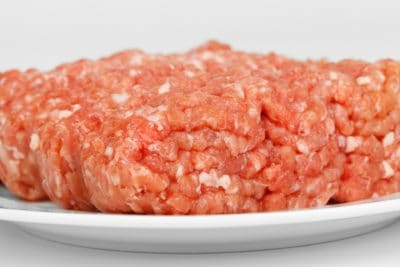
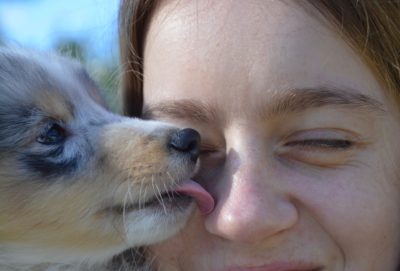
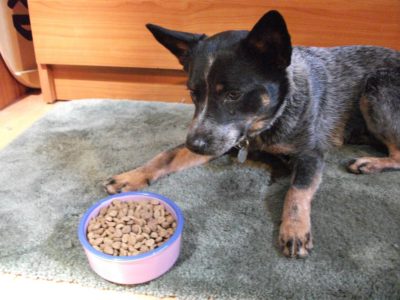




Leave A Comment